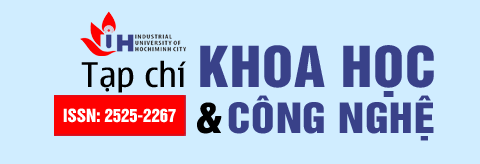PLASTIC USING HABITS INVESTIGATION AND ESTIMATING SAFETY OF PLATIC PRODUCTS IN SOME HOUSHOLES IN GO VAP DISTRICT, HO CHI MINH CITY
Main Article Content
Abstract
Nowadays, since convenience and low price, plastic products have been used frequently and widely. However, the habit of frequent use and re-use can cause health risks from exposure to hazardous substances as known as additives in plastic production. In this study, plastic using habits in households were investigated through online channels and direct at 63 houses in Go Vap district in which 76 plastic products were collected. Plastic samples were prepared and classified following their polymer types, namely PET, PP, PS, PVC, PC, and HDPE. 9 elements: Chlorine (Cl), Antimony (Sb), Mercury (Hg), Lead (Pb), Brom (Br), Chrome (Cr), Cadmium (Cd), Tin (Sn) and Sulfur (S) were examined by Energy Dispersive X-ray Fluorescence (EDXRF) – Shimadzu EDX7000. The content of these elements was compared with plastic safety Vietnam national regulation and international regulation such as QCVN 12-1:2011/BYT for plastic materials contact with foods; TCVN 6238-3:2011 for plastic toys; and REACH/RoHS from EU for packaging plastics and electrical/electronic equipment. The results showed that 7/9 elements could be detected in plastic samples. Most of them are under the risk threshold, except Chlorine and Antimony. The range of Chlorine concentration and Antimony concentration are 59,4 – 951.802ppm and 77 – 466,3ppm, respectively that much higher than the Chlorine and Antimony upper limits when compared to the above regulations. Consumers should be careful when reuse plastic products to contain food under heat, fat, oil, or other conditions which are factors that lead to hazardous substances immigrate into food.

